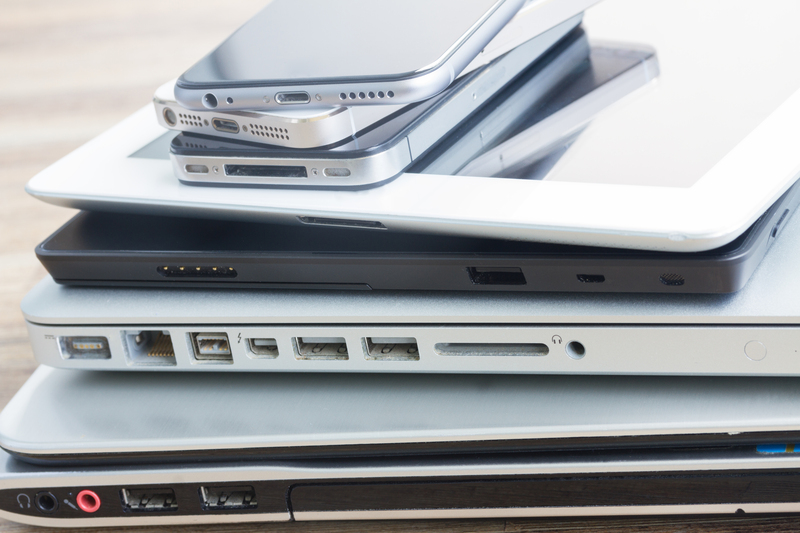The Science of Packing: Moving House with Ease
Posted on 11/06/2025
The Science of Packing: Moving House with Ease
Relocating to a new home can be among life's most stressful events. However, understanding the science of packing for a move can transform a chaotic experience into a well-organized journey. Whether it's your first move or your fifth, mastering the art of efficient packing is key to relocating smoothly and safeguarding your belongings. In this comprehensive article, we'll break down the techniques, strategies, and systematic steps you need for moving house with ease.
The Importance of Packing Science for a Stress-Free Move
Why do so many people dread moving? The overwhelming thought of sorting, boxing, and labeling everything in your home is enough to stress out even the calmest among us. Yet, with a scientific approach to packing, you can reduce anxiety, save time, and protect your most valuable possessions.
- Organization: Knowing what you have and where it's going prevents last-minute chaos.
- Protection: Proper packing techniques keep breakables safe and electronics working.
- Efficiency: A planned strategy reduces the time spent moving items and setting up your new home.
- Cost-effectiveness: Avoiding damage means fewer expenses for replacements or repairs.
The science of efficient packing is all about working smarter, not harder.

The Psychological Benefits of Proper Preparation
Before you even tape your first box, packing smartly begins with mindset. Studies show that preparing for a move in advance effectively reduces stress hormones, enhances decision-making, and even improves the overall moving experience. Planning, prioritizing, and executing are as important as the move itself. This approach isn't just about boxes and tape--it's about emotional wellbeing during a significant life transition.
Strategic Planning: The First Step in Packing Science
1. Declutter with Purpose
Start your moving process weeks, or even months, in advance by decluttering your home. The less you move, the less you pack. Create three zones for decision-making:
- Keep - Items you use regularly or love deeply.
- Donate/Sell - Items in good shape you no longer need.
- Discard - Broken, outdated, or unnecessary items.
This systematic reduction uses behavioral science by minimizing decision fatigue and focuses your energy on packing what truly matters.
2. Inventory Everything
Once clutter is cleared, list your belongings. Use a digital spreadsheet or a written log to assign each item to a category and room. This method isn't just about staying organized during a move--it's proven to cut unpacking time drastically and makes insurance claims much easier.
3. Gather the Right Materials
- Sturdy Boxes in assorted sizes
- Bubble wrap, packing peanuts, and foam sheets
- Packing paper or old newspapers
- Heavy-duty tape and dispensers
- Permanent markers for labeling
- Stretch wrap for furniture and odd-shaped items
- Resealable plastic bags for screws, bolts, and small parts
Tip: Invest in high-quality supplies--cheap boxes can collapse under the weight and cause costly damage.
Room-by-Room Packing: Applying Packing Science
Kitchen Packing Techniques
- Wrap glassware and dishes individually in packing paper or bubble wrap.
- Pack plates vertically in sturdy boxes to minimize impact.
- Bundle utensils and use dish towels to cushion pans and glass.
- Clearly label boxes as "fragile" with their contents and destination room.
Living Room Essentials
- Disassemble electronics and label cables using colored tape or tags.
- Wrap artwork and mirrors in bubble wrap, and consider special TV boxes for flat screens.
- Roll up rugs and secure them with plastic wrap or rope.
Bedroom Solutions
- Use wardrobe boxes to keep hanging clothes organized and wrinkle-free.
- Pack bedding in large trash bags or vacuum-sealed storage bags to save space.
- Place shoes in original boxes, if available, or wrap in pairs.
Bathroom and Utility Spaces
- Seal open toiletries securely in zip-lock bags to prevent leaks.
- Purge expired medications or half-empty cleaning supplies safely.
- Wrap small electronics, like razors or hair dryers, separately to protect cords and parts.
Mastering the Art of Labeling and Categorizing
One of the most underrated packing strategies is systematic labeling. Here's a foolproof method endorsed by professional organizers:
- Color-code each box with colored tape or stickers for each room.
- Mark contents clearly on at least two sides of the box and the top.
- Indicate fragility with bold markers and "This Side Up" arrows.
- Number each box and cross-reference with your inventory list for easy tracking.
Clear labeling is proven to reduce unpacking times by up to 50% and minimizes the risk of items being misplaced or damaged.
Packing Techniques Based on Science
1. Weight Distribution: Heavy on the Bottom
Physics plays a role in effective packing. Place heavier items at the bottom of the box and lighter items on top. This maintains balance, prevents box collapse, and ensures safe handling during transit.
2. Fill Any Gaps
Objects shift during moves, and movement inside boxes leads to breakage. Fill gaps with clothes, packing paper, or bubble wrap to keep everything snug and secure.
3. The 20/80 Rule: The Essentials Box
Keep the 20% of your belongings that you use 80% of the time in a clearly marked "essentials" box or suitcase. This box should travel with you, not in the moving truck, and include items like:
- Vital medications
- First aid kit
- Toiletries
- Change of clothes
- Phone chargers
- Important documents
- Snacks and water
4. The Golden Rule: Don't Overpack Boxes
Boxes should be packed full but not overly heavy. Overpacking increases risk of injury and box breakage. As a guideline, keep boxes under 50 pounds, as recommended by occupational safety standards.
How Technology is Revolutionizing Packing and Moving
Today's technology makes scientific packing easier than ever. There are mobile apps specifically designed for move management--these allow you to digitize inventories, create checklists, and track boxes. Some moving companies also use QR codes so you can scan and locate your possessions in real time during transit and delivery.
Expert Tips for an Effortless Unpack
- Unpack one room at a time, starting with the kitchen or bedrooms.
- Assemble furniture and re-connect electronics as you go.
- Dispose of boxes and packing materials promptly to avoid clutter in your new space.
- Confirm all labeled boxes match your inventory sheet to ensure nothing is missing.
Moving With Kids or Pets? Special Packing Considerations
Relocating with family or furry friends adds extra complexity. The right packing strategies for families can alleviate stress for everyone involved. Let children help pack their own "essentials" box with favorite toys, books, or snacks. For pets, keep food, bedding, and familiar items accessible during the move to help them adjust.
Environmental Considerations: Sustainable Packing Methods
Sustainable packing is gaining traction as many movers look to minimize their environmental impact. Cardboard boxes can be reused, recycled, or rented. Choose biodegradable packing materials, and avoid single-use plastics whenever possible. Some professional movers even offer a "zero waste move" option, using reusable crates and natural fiber protective materials.
Should You Hire Professional Packers?
If your move is especially complex or you're short on time, professional packing services can provide peace of mind. Certified packers use advanced techniques and specialized equipment to protect everything from pianos to prized art collections. However, even if you use professional services, understanding the science of moving house empowers you to communicate better and safeguard sentimental or valuable items yourself.
Final Thoughts: Turning Packing into a Science for Every Move
The science of packing goes beyond boxes, bubble wrap, and tape. It's about planning, efficiency, and protecting both your belongings and your peace of mind. By approaching your upcoming move with a strategic, well-organized mindset, you lay the foundation for a smooth transition and a joyful start in your new home.
Remember, every move is a fresh start and an opportunity to refine your strategies for next time. With knowledge, the right supplies, and a scientific approach, moving house with ease isn't just possible--it's inevitable.

FAQ: All About Packing and Moving with Efficiency
- What is the most important step in moving house?
Preparation--declutter, take inventory, and source quality packing supplies before you start. - How far in advance should I start packing for a move?
Iideally, start packing non-essential items 4-6 weeks before your move date. - How can I keep my valuables safe during a move?
Use special boxes, record serial numbers, and keep valuables with you rather than in the moving truck. - What are environmentally friendly packing options?
Rent reusable boxes, use paper or biodegradable packing peanuts, and recycle materials whenever possible. - Should I use professional packers or pack myself?
If time is limited or you have fragile/valuable items, professional services are worthwhile. For most household moves, informed DIY packing is sufficient if you follow scientific methods.
Conclusion: Packing with Confidence and Science
Whether you're moving across town or across the country, the science of packing equips you with proven systems to move house with ease. By decluttering, using labeling strategies, following room-by-room guides, and protecting your belongings, you can transition smoothly into your new life.
Ready to start packing? Apply these evidence-based tips and watch your next move become simpler, safer, and surprisingly satisfying!



